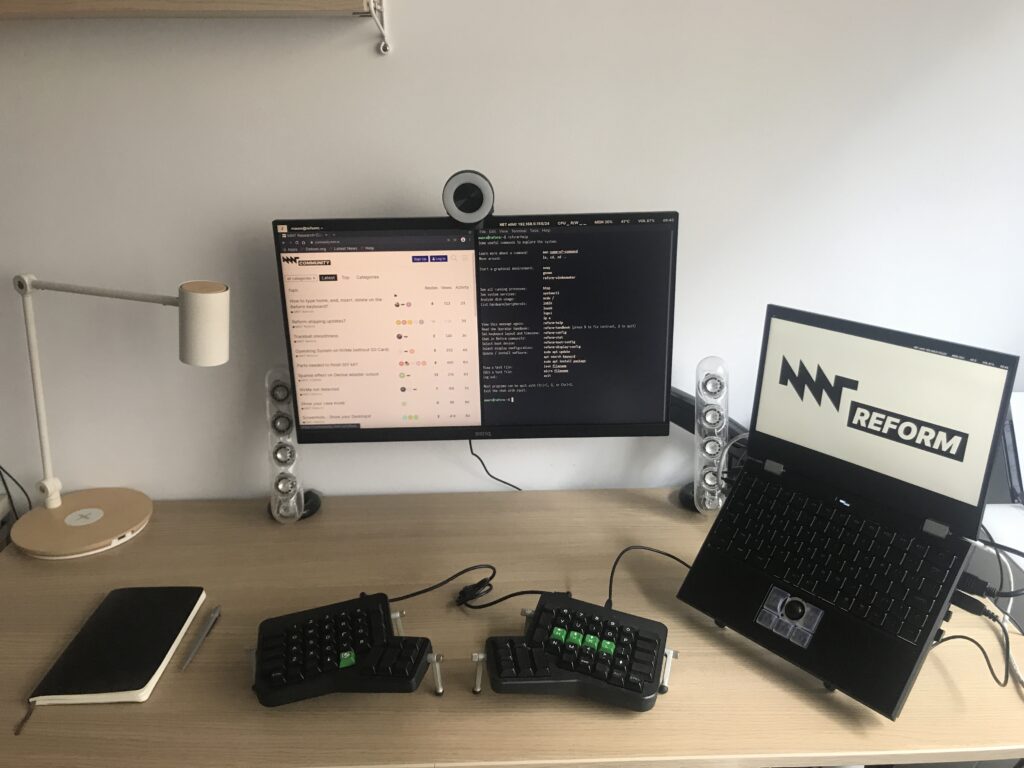MNT Reform 2 DIY Kit Review
The MNT Reform 2 laptop was made available on Crowd Supply in June 2020. This review is for the DIY kit version, and I'll focus on the experience of supporting this project and its vendor through crowdsourcing, the process of putting the machine together, and my first impressions. I plan to share a second post with my thoughts on the experience of using the device as my computer for personal use.
What is the MNT Reform 2 DIY Kit?
The MNT Reform 2 is an Open Hardware Laptop. It comes with the Open Source operating system Debian Linux pre-installed. The DIY kit is just a disassembled version with a set of instructions on how to put it together.
Nowadays laptops, and most electronic devices, lose their warranty if you try to tinker or repair them yourself. This laptop is one of the few that invite you to open them and make them your own. If you don’t believe me, take a pick through the bottom, made of see-through acrylic.
The Crowdfunding Experience
As soon as I saw the project on Crowd Supply, I got hooked and decided to support it. If I remember correctly, the project got fully funded reasonably quickly, and by the time the campaign finished, the number of backers tripled.
The original shipping date was in December 2020, but I only received mine in April 2021. Four months of wait time can sound like a lot, but you need to consider that many producers and shipping companies had delays because of the COVID-19 pandemic. It would have been silly to expect that MNT wouldn't be affected by this. On top of that, there are always delays in February because of the Chinese New Year. In the end, I think these delays ended up being positive because the MNT team used the time to make improvements to the keyboard and battery life. Lukas, MNT’s CEO, constantly shared about progress and any delays. It was pretty entertaining to follow up.
Packaging
In my opinion, most open projects don't have a very appealing branding. MNT is the complete contrary. I’m glad they put the same passion on the packaging as they did on the product.



Putting It All Together
The kit comes with a big printout that has on one side the instructions and on the other side pictures to give you a good idea of what is what. All you need is a cross screwdriver.
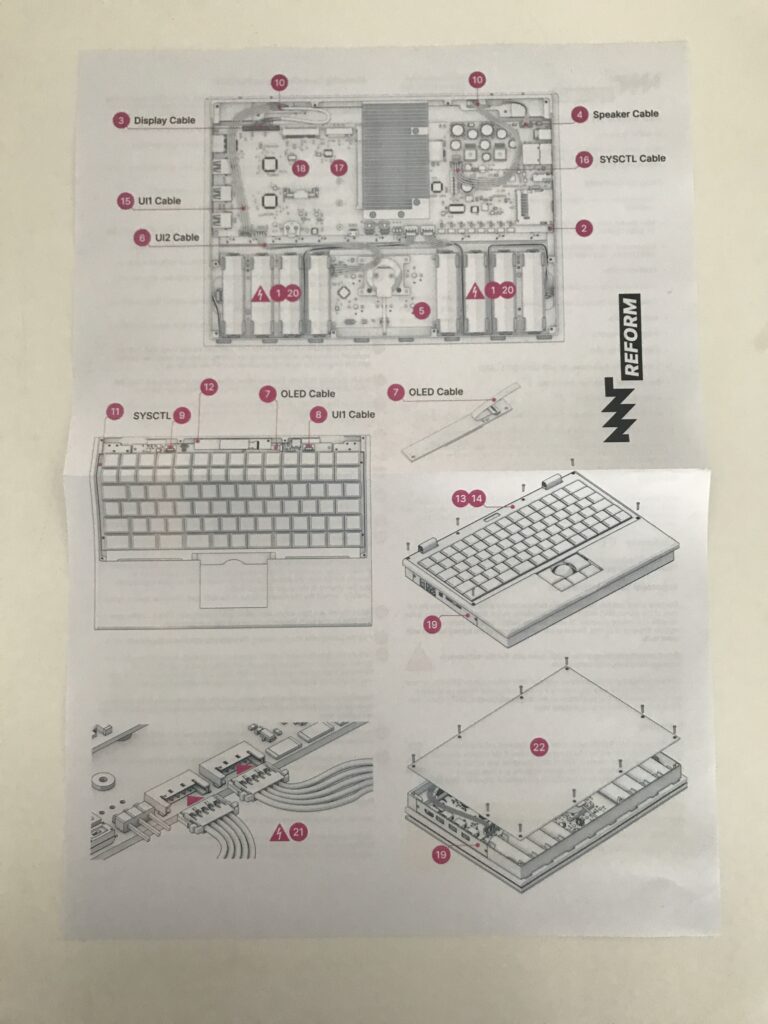
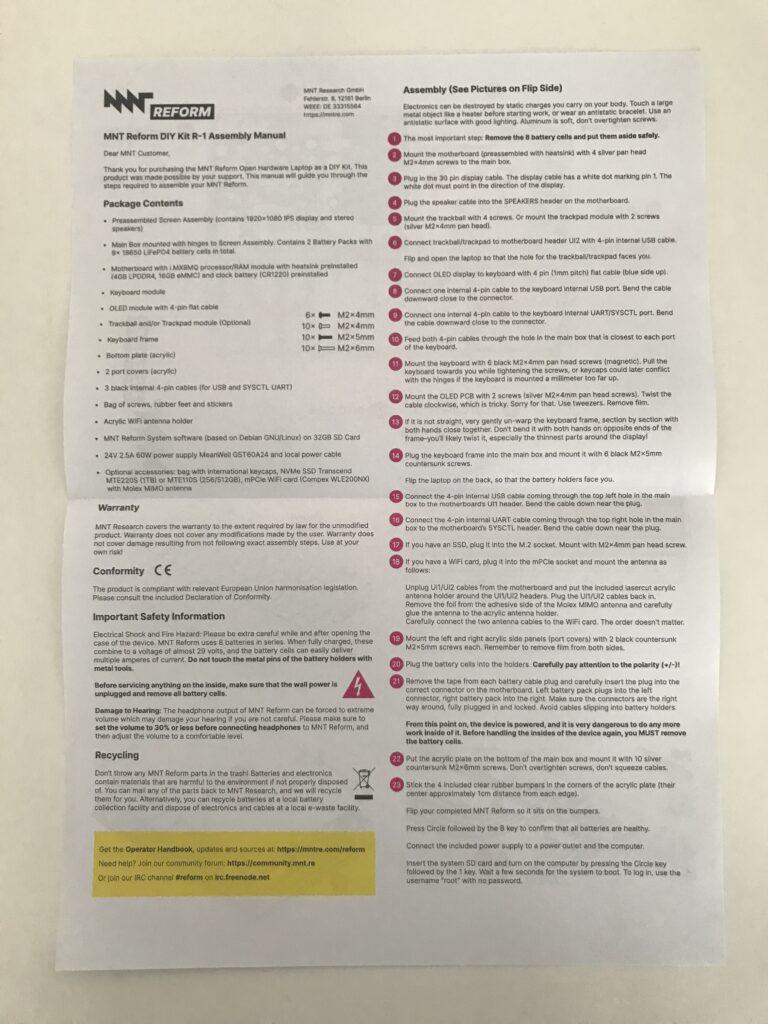
While most steps were clear, there was one that I couldn't figure out about the right way to plug the monitor. Fortunately, all I had to do is open the device again and invert the connector. In total, it took me between 2.5 and 3 hours to get the machine to boot. I swear I hadn't had this much fun with a device in a very long time.
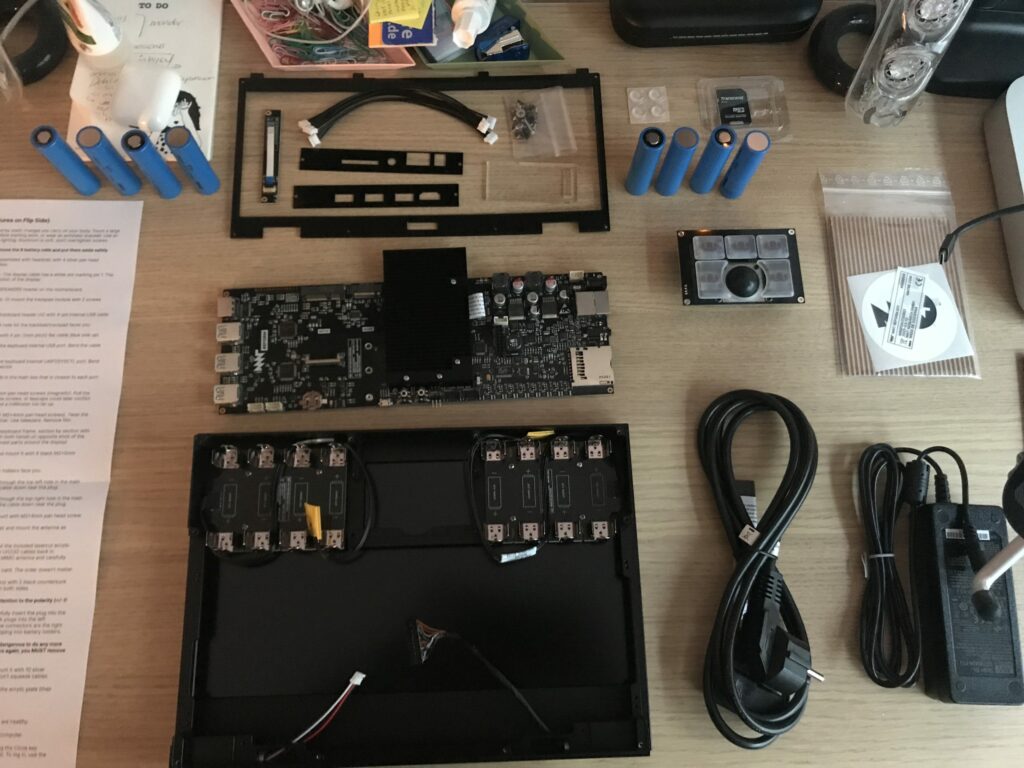
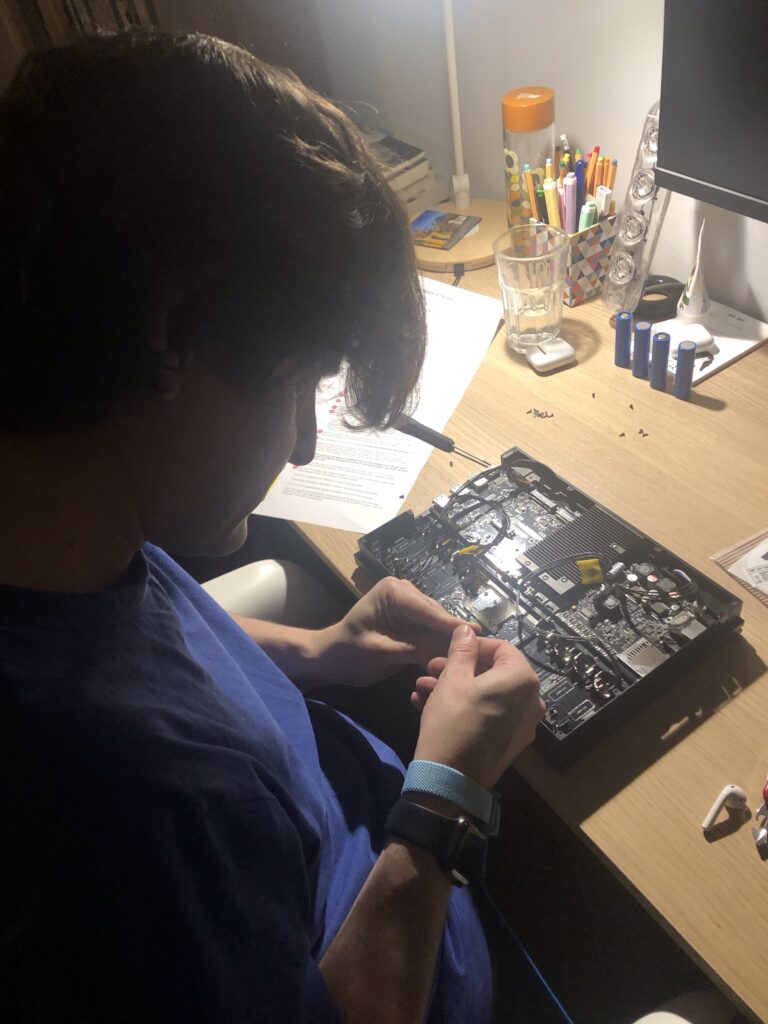
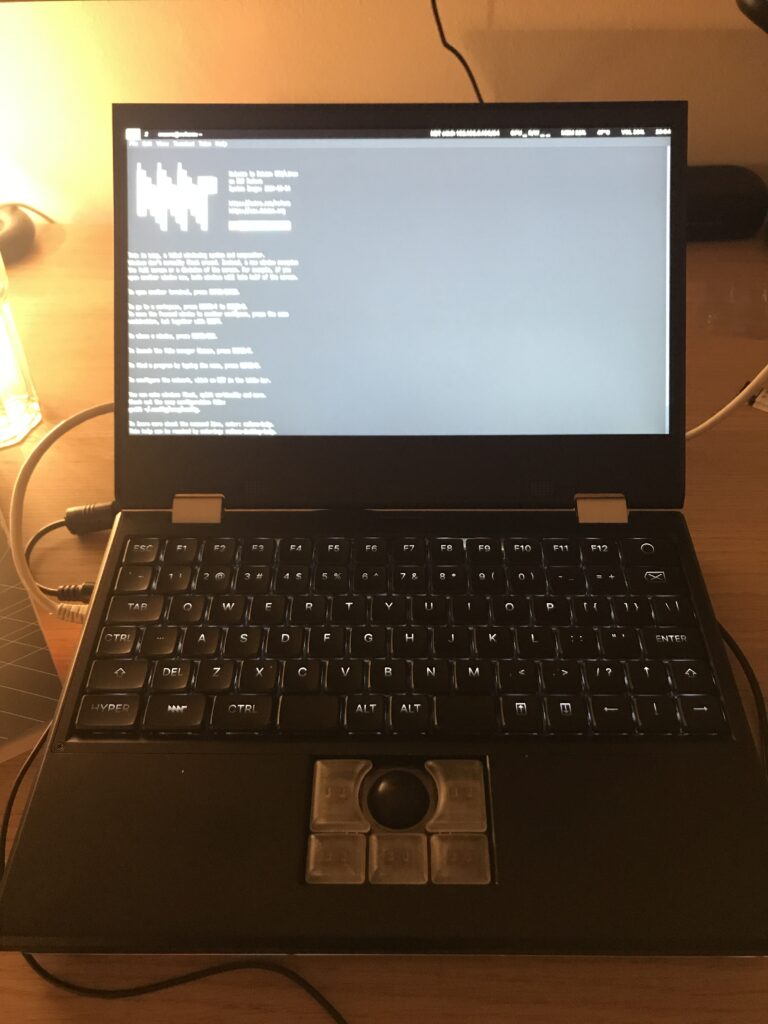
First Impressions
Hardware
The laptop is gorgeous. When the lid is closed, it has this old-school ThinkPad vibe. The aluminum enclosing is pleasant to the touch and hardly picks any fingerprints. The MNT Reform 2 is quite thick if you compare it to today’s standards, which has its benefits, as you'll see.
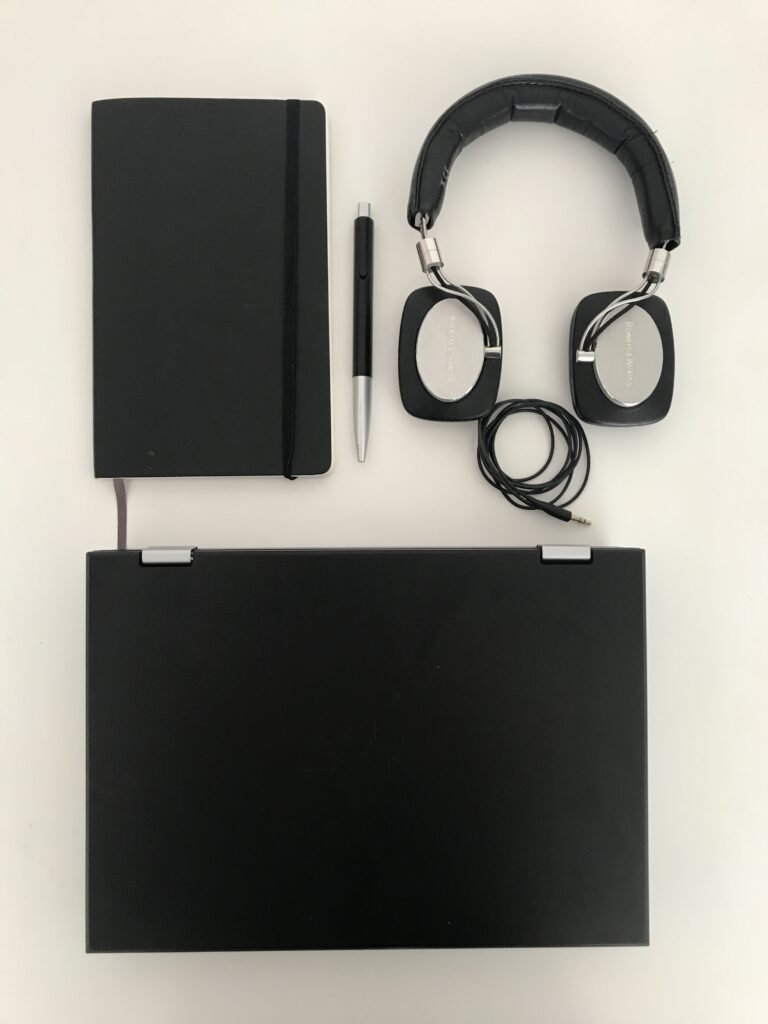
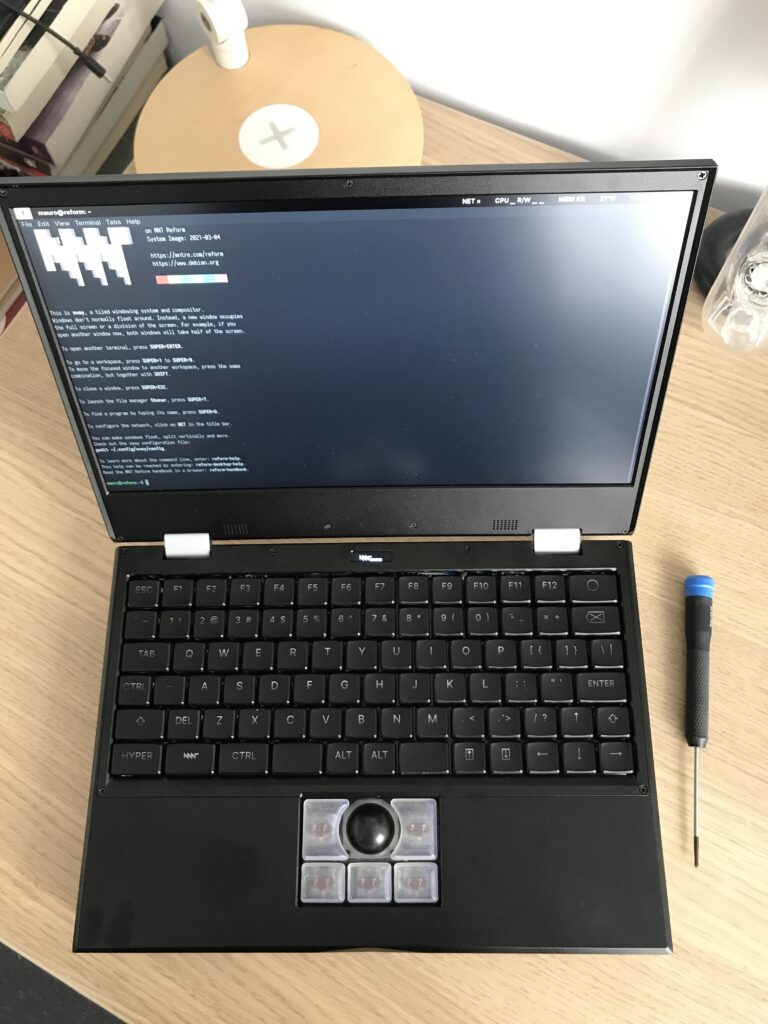
On one side, there’s an HDMI port and three USB type-A ports. On the other side, a port for SD cards, a headphone jack, a network port, and one for the charger. I’m pleased about this because there’s nothing more annoying (and ugly if you ask me) than all those dongles coming out of a beautiful laptop.
If you flip the computer, you can pick into the electronics thanks to the acrylic bottom. At first, I wasn't very excited about this feature. It’s not that I don’t like it, but I think that after a while, it will get scratched, and then it won’t look as good. If there had been an option to get it with an aluminum bottom, I would have probably gotten that one. But I’m glad it is this way because it feels like an invitation to open and tinker with the device.
If you open the lid, the first thing you notice is the trackball. It’s also possible to buy it with a trackpad, but I thought this would be more fun. Plus, I can always replace it if I don’t like it. So far, it’s been quite fun to use, but it will take some time to get used to it.
Next, you might notice the small display on top of the keyboard. It’s helpful to get additional feedback, like battery percentage or the system’s status. The best part is that I can turn it off whenever I don’t need to look into it and avoid wasting precious energy.
And of course, here’s where we find the mechanical keyboard. The keycaps feel very natural to the touch. The switches have excellent travel and sound amazing. However, this could be problematic when working with others, just like with any other mechanical keyboard, and there doesn't seem to be a way to put dampers on these switches. I’m now used to Cherry MX Silent Red switches, and these are louder. Typing is very comfortable, except for the keys I press with my thumbs. The keyboard sits only slightly above the level of the palms rest, and because of the long travel, I feel like I’m constantly pushing the palms rest with the side of my thumb. In my opinion, raising the keyboard a little bit or making the inclination between the palm rest and the keyboard a bit more prominent would help.
The layout of the keys is quite good. I love having a dedicated row for the function keys and a split space bar with two alt keys in between, which makes it more natural to reach them. Instead of a caps lock key, you get a control key, which I already configure on every other laptop. Details like these make this laptop feel like if it is tailor-made. I don’t particularly appreciate having the up arrow where the shift key is typically, but that’s where the open-source part comes very handy. I plan to flash a new layout into the keyboard, hopefully, one with multiple layers.
The last tiny issue I will mention is that the printout of the quotes key was inverted, but MNT is already aware of this, so they might have it fixed for future machines. None of the issues I just mentioned are deal-breakers. This keyboard is by far the best I've used on a laptop.
On the top panel are the display and two speakers. I like the side and top bezels, but the bottom one is a bit prominent and could use, in my opinion, some design or an MNT logo. I decided to put the sticker with the serial number there. The sturdiness of the top panel feels solid. I can move, and it doesn't wobble. The hinges feel pretty sturdy like they can last forever. The display quality is excellent, but the speakers are a bit too quiet.
Last but not least, I must mention the parts that are not present with the machine. The MNT Reform 2 doesn't have a webcam or a microphone (I remember reading somewhere that this was by design thinking about privacy first, but I couldn't find this information on the Crowd Supply or MNT Reform websites). The DIY kit doesn't come with an SSD or a WiFi card, but these can be bought online or at a local store. Lukas shared the exact models that come with the assembled version.
Software
The MNT Reform 2 initially boots into text mode, where you first have to follow a few steps to create your user account. The Operator’s Handbook explains every step in detail. Once you have an account, you can start the graphical interface. The three options that come pre-installed are Sway, Gnome 3, and Window Maker. But you can install any other that’s available for Debian.
Sway is a tiling window manager, and you make heavy use of shortcuts to control it. It takes a little getting used to, but it feels suitable for this machine. It’s also the only one described in detail in the Operators Handbook. The device runs smoothly while using Sway. So far, my test consisted of watching a video with MPV, browsing the web, and editing text with Neovim simultaneously. The only case when the machine started struggling was when I tried to improve this text using Grammarly. Their JavaScript app doesn't crash Firefox or Chromium, but it is painful. While I could blame the machine for not having enough power, I think the problem is we've gotten used to web-based technologies built without performance in mind. I find it ridiculous that you need a high-end laptop to run a web application. I tried to use my iPad (A-12 chip) for comparison, but Grammarly doesn't even let you use the web application on Safari iOS, which proves my point.
The Gnome 3 version that comes with the MNT Reform 2 has fewer components than the vanilla version. I guess that it helps reduce the load since full DEs are very power-hungry. I tried to do the same experiment as with Sway, but unfortunately, none of the videos played well on MPV, and in general, I did feel a bit of lag when using Gnome for some tasks.
If you cannot live with a tiling window manager, I recommend you go with Window Maker. It doesn't look very up-to-date, but after trying it for a while, I must say it performed very well. Like with Sway, there was no issue at all having my three designated applications running simultaneously.
Final Thoughts
I've been using the MNT Reform 2 to write these notes down for the past few days. Hearing the sound of the mechanical keyboard is music to my ears. Not having a network connection allows me to concentrate on what I want to say instead of being annoyed by multiple notifications. From time to time, I plug an ethernet cable to search for something online and eventually publish these words on my blog. The whole experience reminded me about times when computing felt a lot more personal, and our lives didn't need to be online 24/7.
Not only has it been fun to build and use this machine, but I’m also very excited about the idea of being able to service and extend its life. I love the concept of having a device that evolves according to my needs. Above all, it feels good to own a device not because it’s the latest and greatest but because its ethos resonates with my own. Only time will tell if the MNT Reform 2 will live up to its promises, but I’m certainly rooting for it.
